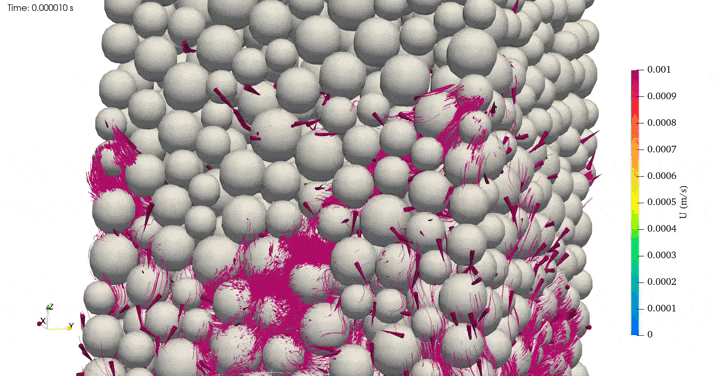Permeability estimation from pore to Darcy in cemented granular media using resolved CFD-DEM model
Published in Results in Engineering, 2024
Recommended citation: Kazidenov, D., & Amanbek, Y. (2024). Permeability estimation from pore to Darcy in cemented granular media using resolved CFD-DEM model. Results in Engineering, 103359. https://doi.org/10.1016/j.rineng.2024.103359
“Permeability prediction plays a critical role in many engineering applications that involve fluid flow through porous media. Various factors including pore shape, particle size, polydispersity and compaction levels can significantly impact the flow behavior of a porous medium. Moreover, the influence of cementation should also be considered. In this work, we investigate the effect of particle cementation on the permeability using the three-dimensional resolved CFD-DEM approach. The modified cohesive contact model is utilized to simulate the cementation behavior of particles. The numerical model is initially validated by a laboratory experiment demonstrating similar results for the permeability of the sample with polydisperse particles. Results show that the permeability in both polydisperse and monodisperse particle systems decreases when the cementation of particles increases. Especially, this relationship is observed at higher porosity values. In contrast, in more compacted samples with lower porosity, the cementation effect becomes less. The numerical study also shows that the tortuosity values in both particle systems increase almost linearly with decreasing porosity. However, the strong influence of cementation on tortuosity is noticeable only in a monodisperse particle system dominated by uniform pore shapes with regular fluid paths. A study of fluid flow at different gradation levels reveals that an increase in cementation leads to a significant decrease in the permeability in a sample with larger particles. From the point of view of applying the numerical model to the real reservoir sand sample, the numerical results of permeability align well with the data reported by many studies. “

